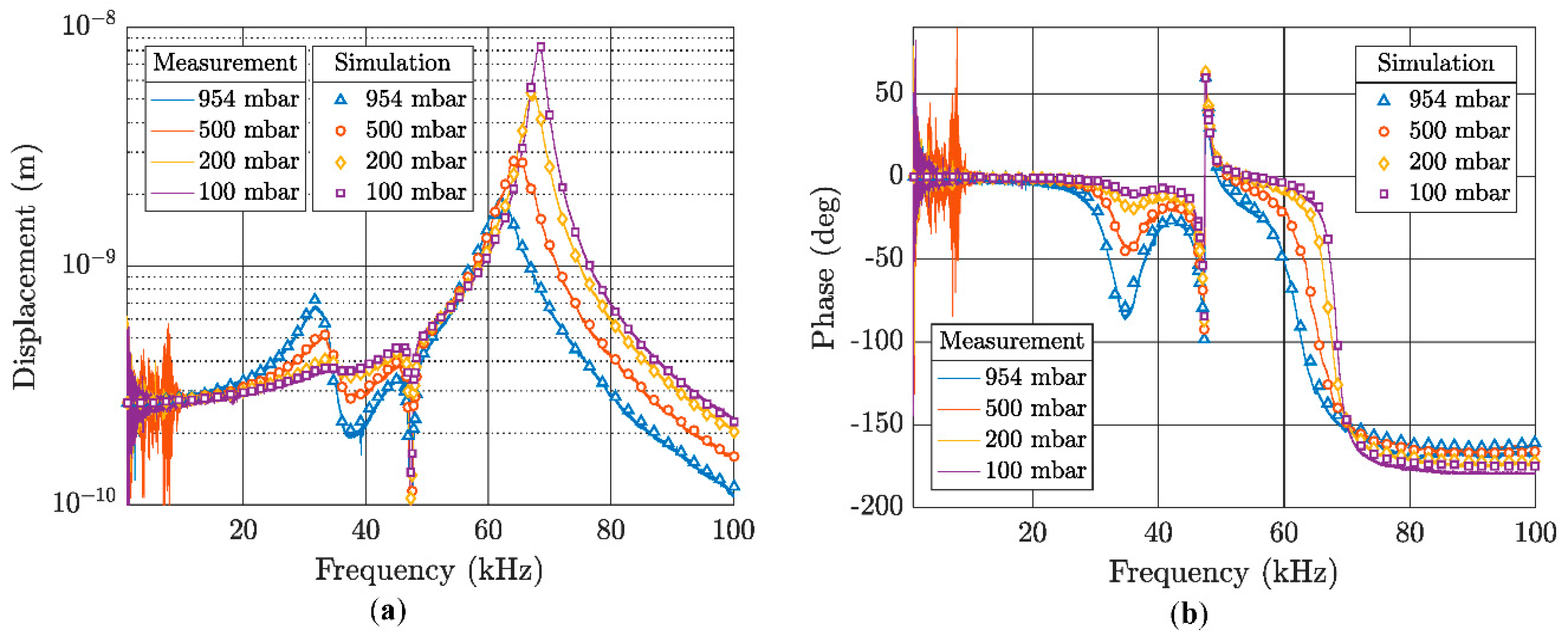Reliable Compact Models for the Investigation of Acoustic High-Frequency Effects in MEMS Transducers †
Abstract
:1. Introduction
2. Methods
2.1. Modeling and Validation of the Input Impedance of the Acoustic Channel
2.2. Physical Interpretation of the Full System Model
3. Results and Discussion
4. Conclusions
Acknowledgments
Conflicts of Interest
References
- Kuenzig, T.; Schrag, G.; Dehé, A.; Wachutka, G. Performance and noise analysis of capacitive silicon microphones using tailored system-level simulation. In Proceedings of the Transducers 2015 18th International Solid-State Sensors, Anchorage, Alaska, USA, 21–25 June 2015. [Google Scholar]
- Schrag, G.; Kuenzig, T.; Pham, D.; Glacer, C.; Dehé, A.; Wachutka, G. Acoustic high-frequency effects inside the package of capacitive silicon microphones and their impact on the device performance. Proc. SPIE 2015, 9517, 95170M. [Google Scholar] [CrossRef]
- Schaedel, H. Theoretische Untersuchungen an homogenen Übertragungsleitungen der Fluidik. Frequenz 1969, 23, 350–358. [Google Scholar] [CrossRef]
- Manz, J.; Bosetti, G.; Dehé, A.; Schrag, G. A novel silicon “Star-Comb” microphone concept for enhanced signal-to-noise-ratio: Modeling, design and first prototype. In Proceedings of the 2017 19th International Conference on Solid-State Sensors, Actuators and Microsystems, Kaohsiung, Taiwan, 18–22 June 2017. [Google Scholar]
- Schrag, G.; Wachutka, G. System-Level Modeling of MEMS using Generalized Kirchoffian Networks- Basic Principles. In System-Level Modeling of MEMS; Wiley-VCH Verlag GmbH & Co.: Weinheim, Germany, 2012; pp. 19–51. [Google Scholar]
- Bosetti, G.; Manz, J.; Krumbein, U.; Schrag, G. Modeling and physical analysis of an out-of-plane capacitive MEMS transducer with dynamically coupled electrodes. Microsyst. Technol. under review. [CrossRef]
- Morse, P. Theoretical Acoustics; Princeton University Press: Princeton, NJ, USA, 1968. [Google Scholar]



Publisher’s Note: MDPI stays neutral with regard to jurisdictional claims in published maps and institutional affiliations. |
© 2018 by the authors. Licensee MDPI, Basel, Switzerland. This article is an open access article distributed under the terms and conditions of the Creative Commons Attribution (CC BY) license (https://creativecommons.org/licenses/by/4.0/).
Share and Cite
Bosetti, G.; Manz, J.; Krumbein, U.; Schrag, G. Reliable Compact Models for the Investigation of Acoustic High-Frequency Effects in MEMS Transducers. Proceedings 2018, 2, 1024. https://doi.org/10.3390/proceedings2131024
Bosetti G, Manz J, Krumbein U, Schrag G. Reliable Compact Models for the Investigation of Acoustic High-Frequency Effects in MEMS Transducers. Proceedings. 2018; 2(13):1024. https://doi.org/10.3390/proceedings2131024
Chicago/Turabian StyleBosetti, Gabriele, Johannes Manz, Ulrich Krumbein, and Gabriele Schrag. 2018. "Reliable Compact Models for the Investigation of Acoustic High-Frequency Effects in MEMS Transducers" Proceedings 2, no. 13: 1024. https://doi.org/10.3390/proceedings2131024




